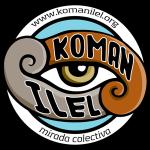
Author

(Español) Otorgan amparo contra el parque eólico en San Dionisio del Mar
A LOS MEDIOS DE COMUNICACIÓN NACIONAL E INTERNACIONAL
A LOS PUEBLOS DE OAXACA Y EL MUNDO
A LA CIUDADANIA EN GENERAL
A LA OPINIÓN PÚBLICA
COMUNICADO URGENTE
El juez 7º de distrito con sede en Salina Cruz, Oaxaca, otorga el amparo contra la instalación del parque eólico en la Barra Santa Teresa a la comunidad indígena Ikojts de San Dionisio del Mar.
El día 29 de noviembre, un grupo de priistas de San Dionisio del Mar, encabezado por Jorge Castellanos, intento desalojar a los compañeros en resistencia, que ocupan el palacio municipal desde el 29 de enero de este año. Sin embargo la eficaz organización de la población en resistencia logro impedir este desalojo y capturar a dos de las personas que entraron con violencia a saquear el casino municipal.
Estás personas fueron entregadas ese mismo día a la policía estatal y al delegado de gobierno en la región Rodrigo Velázquez García. Quien no cumplió con su obligación de presentar a estos dos detenidos a la autoridad, como corresponde, si no que los entrego a los priistas quienes se encontraban realizando un bloqueo en la entrada de la localidad. Como se pude confirmar en el video del siguiente vinculo http://www.youtube.com/watch?v=p6RGw986Np8&sns=em y http://www.youtube.com/watch?v=P4fRexOZ0_I&sns=em
En el mismo video se puede escuchar que en la agresión del 10 de octubre, Rodrigo Velázquez asegura que él coordino el bloqueo a la caravana humanitaria a San Dionisio del Mar, en la cual los compañeros en resistencia fueron amenazados con palos, piedras y con ser rociados de gasolina y quemados. Estos personajes son los aliados políticos en la región de Mareña Renovables, quienes impulsan el proyecto eólico. Mientras tanto, el gobierno estatal en vez de tratar de encontrar una solución a la situación de tensión, utiliza a estos grupos para aumentar la situación de riesgo e intimidar a la población en resistencia.
Frente a estos últimos acontecimientos el día martes 4 de Diciembre se interpuso una demanda de amparo ante el juzgado federal en donde la comunidad de San Dionisio del Mar pide la suspensión definitiva del proyecto eólico en la Barra Santa Teresa. Pues tal proyecto implica la privación de los derechos agrarios colectivos a la propiedad, posesión, uso y disfrute de las tierras de uso común de la Barra Santa Teresa. Dicho amparo recayó en el Juzgado 7º de Distrito en el Estado de Oaxaca, concede en Salina Cruz; con el Número de Expediente Asignado: 739/2012, Número de Expediente Único Nacional: 12914828; Juez: Isaías Corona Coronado, Juez de Distrito; Mesa III-B, Secretario: Luis Anselmo Félix Rodríguez.
El día de hoy, 07 de diciembre de 2012, el juez designado “con fundamento en el artículo 233 de la Ley de Amparo, de plano, decreta la suspensión de oficio de los actos reclamados, para el efecto de que las autoridades responsables no priven total o parcial, temporal o definitiva de los bienes agrarios del núcleo de población quejoso, respecto de los terrenos ubicados en la Barra Santa Teresa”. Además especifica que dicha suspensión “hágase del conocimiento de las autoridades responsables… en términos de lo previsto en el párrafo tercero del artículo 23 de la ley de la materia, para su inmediato y debido cumplimiento bajo su más estricta responsabilidad. Se solicita a las autoridades responsables informen dentro del plazo de veinticuatro horas, sobre el cumplimiento dado a esta determinación, apercibidas que de no cumplir con lo ordenado se les sancionará conforme a la ley penal por el delito de abuso de autoridad, en términos del artículo 206 de la Ley de Amparo.”
Esta es una victoria contundente en la lucha por el respeto al territorio y a los derechos de los pueblos indígenas. Exigimos que todas las autoridades involucradas en el proyecto eólico “San Dionisio del Mar”, cumplan con lo establecido en la suspensión otorgada por el juez federal.
“VIVA LA BARRA LA SANTA TERESA”
“VIVAN LOS PUEBLOS INDÍGENAS”
“VIVAN LAS LAGUNAS DE LOS PUEBLOS IKOJTS Y BINNI’ZAA”
NO AL MEGAPROYECTO EÓLICO EN EL ISTMO DE TEHUANTEPEC
ASAMBLEA DE LOS PUEBLOS INDIGENAS DEL ISTMO EN DEFENSA DE LA TIERRA Y EL TERRITORIO
Press conference and Panel: Struggles, Resistence and Autonomy
En el marco de los 20 años de lucha por la defensa activa de los derechos humanos, la Organización Sociedad Civil “Las Abejas” de Acteal; realiza una serie de actividades en los cuales invita:
A los luchadores y luchadoras sociales, personas, estudiantes, maestros, colectivos, organizaciones, defensores y defensoras de derechos humanos, académicos, intelectuales y medios de comunicación (libres y convencionales) a una conferencia de prensa y panel, sobre la situación actual de los Derechos Humanos en México; luchas, resistencias, autonomías y XV años de construcción de la otra justicia frente la impunidad y la injusticia de la Masacre de Acteal. Se contará con la participación de compañeros y compañeras solidarios de la lucha de “Las Abejas” y del Coro de Acteal. El evento tendrá lugar en la oficina del Centro de Derechos Humanos Fray Bartolomé de Las Casa, Calle Brasil # 14 Barrio de Mexicanos; a las 10:30 horas de la mañana el día lunes 10 de Diciembre.
En la noche se estrenará un documental: Antsetik tsa’ik Lekil Kuxlejal (mujeres construyendo buena vida), a las 8 de la noche, en la Casa de las Imágenes, Belisario Domínguez, # 9, Col. Centro, San Cristóbal de Las Casas Chiapas. Estarán presentes las compañeras de Las Abejas. Entrada libre.
(Descarga aquí)

